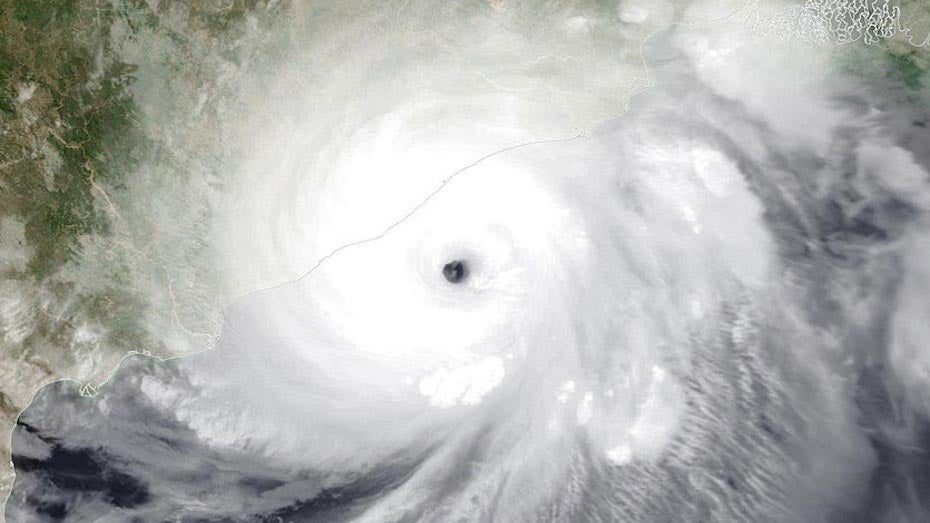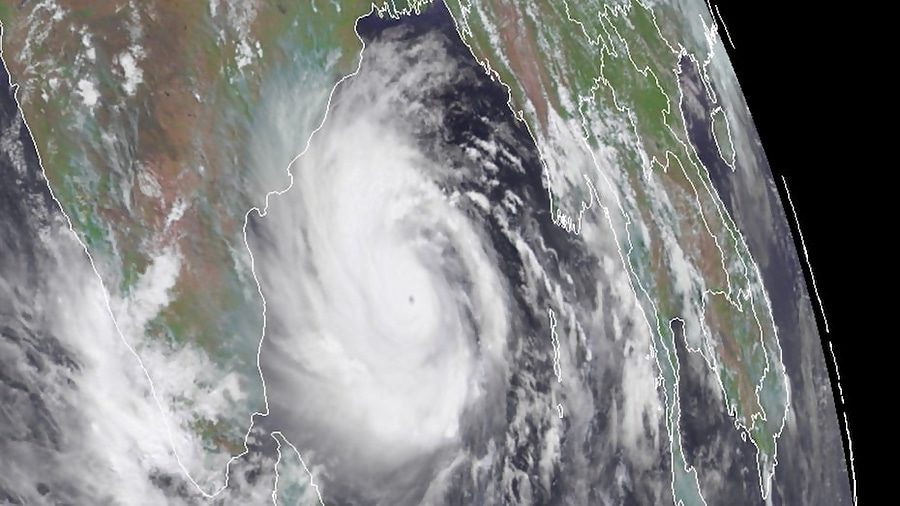On the scale used by the Indian Meteorological Department (IMD), Amphan was upgraded at 3 am EDT Monday to the highest possible level: super cyclonic storm. Only a handful of storms — about one per decade — achieve this level, which corresponds to a three-minute-averaged wind speed of 120 knots (140 mph). Hurricane ratings by the National Hurricane Center and JTWC are based on one-minute averaging, which will yield higher wind speeds for a given storm.
Amphan took advantage of very favorable conditions in the southern Bay of Bengal to strengthen incredibly quickly over the weekend. Drawing on very warm sea surface temperatures of 31°C (88°F), high oceanic heat content, and light wind shear, Amphan bolted from minimal tropical storm strength (35 knots or 40 mph) to Category 5 equivalent strength (140 knots or 160 mph) in just 48 hours — and from minimal hurricane strength (65 knots or 75 mph) to Cat 5 equivalent strength in just 24 hours.
Forecast for Amphan: Some weakening possible before landfall, but storm surge threat will remain dire
Steering currents are expected to take Amphan on a straightforward track just east of due north. On this course, Amphan will likely make landfall somewhere between Kolkata, India, and Chittagong, Bangladesh, on Wednesday morning local time.
Even as Amphan reached Category 5 strength, there were already signs of a potential eyewall replacement cycle brewing. Such a process would halt Amphan's strengthening and perhaps weaken it slightly. As it moves into the northern Bay of Bengal on Tuesday local time, wind shear will ramp up from around 10 knots to 20-25 knots, and the shear will inject somewhat drier air into the storm. All these factors imply that Amphan may decline gradually in strength before it plows ashore, although perhaps not by as much as the JTWC's 09Z Monday forecast that Amphan will be a Category 1 storm when it makes landfall. The 00Z Monday run of the high-resolution HWRF model, one of the best models at storm intensity, projects that Amphan will maintain Category 4 strength up through landfall.
The most serious threat posed by Amphan is potentially catastrophic storm surge. Even if Amphan weakens, the storm surge threat will remain dire. Amphan is a large cyclone that is already pushing a tremendous amount of water northward into the Bay of Bengal, which exerts a funneling effect on northward-moving cyclones. Any minor weakening of Amphan's winds would have little immediate effect on mitigating the storm surge threat, which has already been put into motion (literally). There is a great deal of momentum in the water pushed by large, powerful storms even after they weaken, as evidenced by 2008's Hurricane Ike in Texas and 2012's Hurricane Sandy in New Jersey and New York.
IMD is warning that a surge of up to 4-5 meters (13-16 feet) is possible over parts of West Bengal, with 3-4 m (10-13 ft) possible into Bangladesh. These values may not yet fully take into account Amphan's rapid strengthening.
The tragic history of storm surge in the northern Bay of Bengal
Some of the most destructive and deadly cyclones in world history have struck the northern Bay of Bengal. An 1876 cyclone brought the highest known storm surge to Bangladesh — 13.0 meters (43 feet). The mighty cyclone killed an estimated 200,000 people. The deadliest storm in world history, the 1970 Bhola Cyclone of 1970, killed an estimated 300,000 - 500,000 when it made landfall in Bangladesh along the Meghna River Estuary near Bhola Island on November 12, 1970. The cyclone brought a storm surge estimated at 10.4 meters (34 feet) to the coast.
Just last year, the Bay of Bengal experienced an intense May cyclone: Category 4 Tropical Cyclone Fani, which made landfall in eastern India in the state of Odisha on May 2 with sustained winds of 155 mph. Fani killed 89 people and did $8.1 billion in damage in India and Bangladesh, according to insurance broker Aon, making it one of the top-five costliest Indian cyclones on record. Fani's landfall to the western side of the bay meant that the storm surge just to the right of the center was less than a landfall at the top of the bay would have produced.

Warning systems have been greatly improved in India and Bangladesh over the 20 years since the Odisha cyclone. However, the region's geography and high population means it is still exceptionally vulnerable, and Amphar will need to be taken seriously by all concerned. The novel coronavirus pandemic will no doubt complicate evacuation and sheltering in myriad ways.
Bob Henson is a meteorologist and writer at weather.com, where he co-produces the Category 6 news site at Weather Underground. He spent many years at the National Center for Atmospheric Research and is the author of The Thinking Person's Guide to Climate Change and Weather on the Air: A History of Broadcast Meteorology.




Comment: RT had more news on the ground in India and Bangladesh: